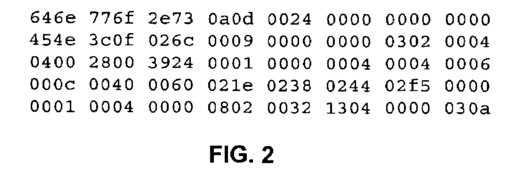Columbia University v Symantec Corp [Fed. Circ. 2015]
Provisional patent applications are a useful tool for tech companies looking quickly and cheaply gain patent-pending status for new inventions, but a recent decision by the United States Court of Appeals for the Federal Circuit (“CAFC”) warns that writing a provisional patent application should not be taken lightly. The CAFC took issue with inconsistent statements between a provisional patent application and the subsequent formal patent and invalidated a number of the patent’s claims for being indefinite. [13] The issue was ultimately that there was a change in definitions between the provisional and the formal.

U. S. Patent No. 7,487,544
Can a “Byte Sequence Feature” Include Resource Information, or just machine-executable code?
The case involved patents describing the application of data mining and machine learning techniques for detecting malicious email attachments. [3] The case involved six patents in all, and three separate issues of claim construction, but it was a question surrounding the meaning of “byte sequence feature” in U.S. Patent No. 7,487,544 that caused the CAFC to point to an inconsistency between the provisional and the formal patent, and ultimately led to the CAFC invalidating a number of the patent’s claims. [21]
The provisional patent application defined the term “byte sequence feature” as including executable machine code instructions, but not including non-machine code “resource information”. [10] However, the statement that a “byte sequence feature” does not include non-machine code resource information was removed from the formal patent. This was a significant shift in definitions.
However, the provisional application was incorporated by reference, in its entirety, along with the original definition. Although it was not discussed in this case, it is understood that provisional applications incorporated by reference are “effectively part of the” formal patent specification. [See Advanced Display Sys., Inc. v. Kent State Univ., 212 F.3d 1272, 1282 (Fed. Cir. 2000)] The CAFC does not comment on whether its analysis would have changed had the provisional application not been incorporated by reference.
Holding in mind the original definition, the CAFC looked to a number of claims in the formal patent that include the express limitation that the “byte sequence feature” includes resource information – – clearly at odds with the original definition. In the CAFC’s words:
Claims 1 and 16 conflate a “byte sequence feature,” which is a feature extracted from machine code instructions, with the extraction of “resource information,” which is not a machine code instruction. Specifically, the claims describe the step of extracting machine code instructions from something that does not have machine code instructions… The claims are nonsensical in the way a claim to extracting orange juice from apples would be, and are thus indefinite.” [12-13]
The CAFC therefore found those claims which conflate the meaning of “byte sequence feature” to be invalid for indefiniteness under 35 U.S.C. 112. [13]
Commentary
The major implication for patent drafters and tech companies considering writing their own provisional patent application is that misstatements in the provisional might not be so easily fixed. This case can therefore be taken as guidance that patent-filers should seek professional patent advice early on in the patent process.
A question that remains unanswered is how impactful a shift in definitions would be if the provisional was not incorporated by reference into the formal. This case can therefore also be taken as caution to patent drafters who incorporate provisionals by reference as a matter of course.
On a more academic note, it is worth considering whether it is consistent with underlying bargain theory behind patent law for the claims of a formal patent to be invalidated because the inventor decided to broaden a definition between the provisional and the formal patent. In one sense, as the CAFC stated, “[t]he patentee cannot rely on its own use of inconsistent and confusing language in the specification to support a broad claim construction which is otherwise foreclosed.” On the other hand, a version of the invention was taught in the provisional, and an expanded version of the invention was taught on the formal patent – and the formal patent included claims to capture the expanded version of the invention. There was no interceding disclosure between the provisional filing date and formal patent filing date that was alleged to destroy the novelty of the invention. Rather, there was a definitional change, which the inventor seemingly was unable to properly execute.
